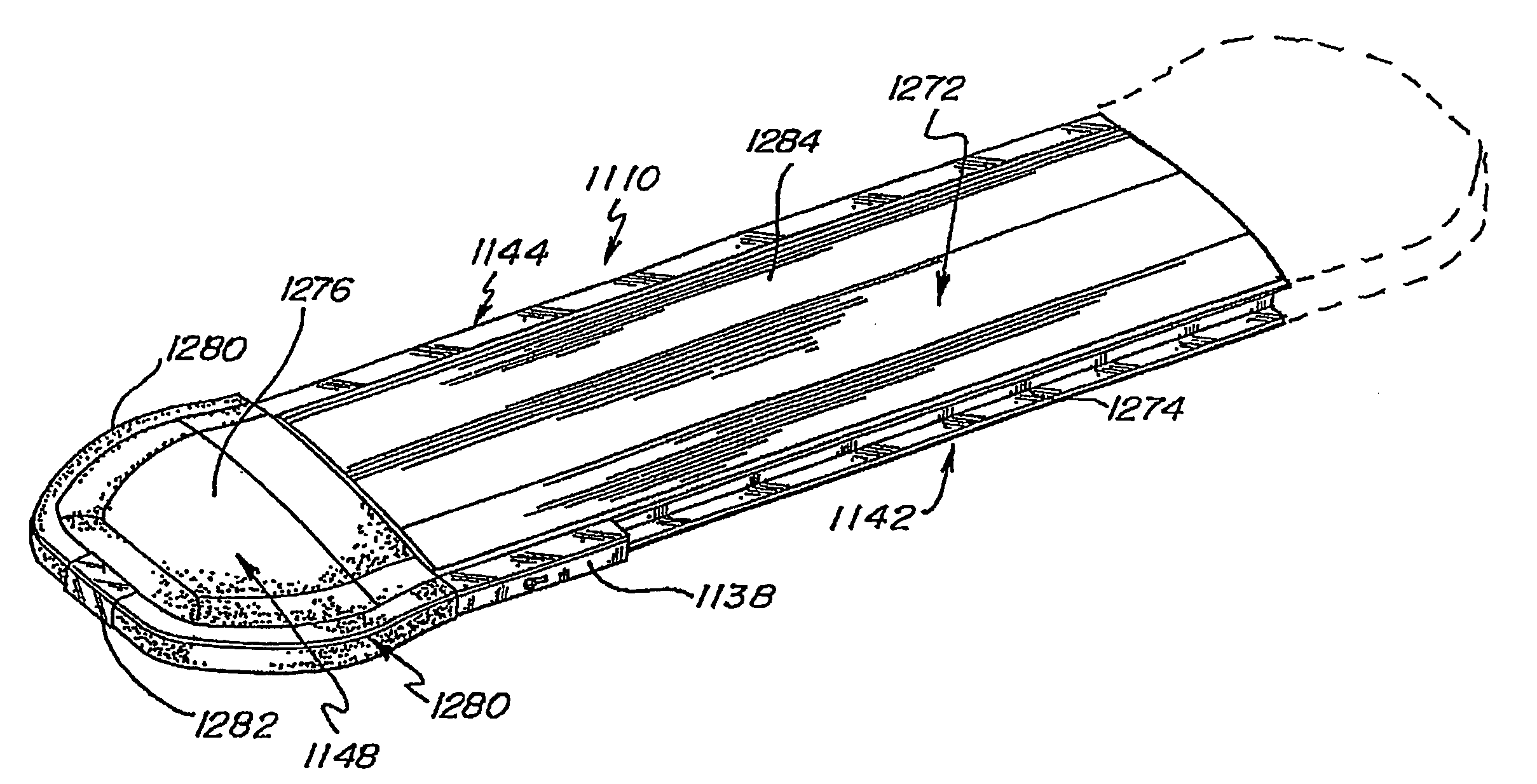End cap warning signal assembly
a technology of warning signal and end cap, which is applied in the direction of identification means, instruments, lighting support devices, etc., can solve the problems of increasing the size of the light support, adversely affecting the aerodynamic characteristics of the vehicle, and relying on mechanical components to revolve, etc., to achieve simple and inexpensive design, operation, and long life cycle
- Summary
- Abstract
- Description
- Claims
- Application Information
AI Technical Summary
Benefits of technology
Problems solved by technology
Method used
Image
Examples
Embodiment Construction
[0058]FIG. 1 shows an embodiment of generic controller 50 in electric communication with LEDs 1-14. Although not depicted in FIG. 1, controller 50 generally may comprise a microprocessor as well as additional electronics components, such as transistors, resistors, diodes, oscillators, capacitors, and voltage regulators that one skilled in art would recognize how to connect in order to control the LEDs 1234.
[0059]Controller 50 may include a memory device that stores any firmware code used to illuminate the LEDs 1234. The memory element may be a separate electronic component, such as an EEPROM, FlashRAM, or any other memory devices known by those skilled in the art. The memory element may alternatively be a part of the microcontroller itself, thereby reducing the overall footprint of the controller 50 by reducing the number of individual components.
[0060]As seen in FIG. 1, controller 50 is used to activate groups of LEDs 1234 that are electrically connected in series, the controller 5...
PUM
 Login to View More
Login to View More Abstract
Description
Claims
Application Information
 Login to View More
Login to View More - R&D
- Intellectual Property
- Life Sciences
- Materials
- Tech Scout
- Unparalleled Data Quality
- Higher Quality Content
- 60% Fewer Hallucinations
Browse by: Latest US Patents, China's latest patents, Technical Efficacy Thesaurus, Application Domain, Technology Topic, Popular Technical Reports.
© 2025 PatSnap. All rights reserved.Legal|Privacy policy|Modern Slavery Act Transparency Statement|Sitemap|About US| Contact US: help@patsnap.com



